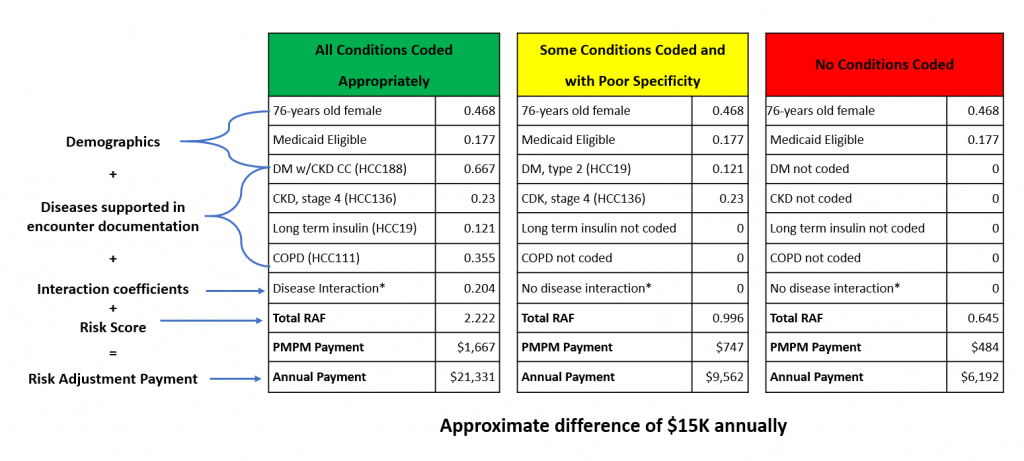
Development of risk adjustment strategies is often complex and involves input from stakeholders across multiple cross-functional teams. Quality, finance, compliance, operations, and other teams are all stakeholders in the decision-making process. Managed care organizations strive to deploy effective, comprehensive risk adjustment solutions which requires taking into account a number of considerations: effectiveness, regulatory compliance, and patient and provider satisfaction.
When considering the various options available to health plans, there is an emerging trend to shift from retrospective and home assessments to PCP-centric prospective programs. There are a few reasons for this change. Given the established relationships patients have with their PCPs, prospective programs are often the most effective method for addressing gaps in care and ensuring alignment between medical record documentation and coding to the highest degree of specificity. Prospective programs permit real-time alerts of previously diagnosed conditions as well as those that are suspected. The ability to impact outcomes, at the point of care, is powerful.
In contrast, legacy models have very little impact on care and outcomes. Retrospective review programs deploy teams of coders to review charts and capture codes after the patient encounter has occurred. This backward-looking approach is not only abrasive and disruptive to providers, it is also ineffective in terms of impact on quality of care and patient outcomes.
Home assessments, while prospective in nature, are abrasive and invasive to patients. They are performed by clinicians that typically do not have an existing relationship with patients and do not have access to the EMR where the most valuable clinical information is stored. Furthermore, continuity and coordination of care is often non-existent in that follow-up care is not guaranteed. In fact, a September 2020 report from the Office of Inspector General (OIG) expressed this key takeaway: “Billions in estimated risk-adjusted payments supported solely through HRAs [health risk assessments] raise concerns about the completeness of the payment data, validity of diagnoses on HRAs, and quality of care coordination for beneficiaries.”
The shift from antiquated programs that simply center around collecting codes to PCP-centric initiatives has been accelerated by certain actions and comments made by the Centers for Medicare and Medicaid Services (CMS). Beginning in 2017, CMS began to gradually revise its methodology for calculating beneficiary risk scores to increasingly rely on encounter data. By 2022, the expectation is that the Part C risk score would rely entirely on encounter data. The benefit of encounter data is that it validates the source of the data to ensure that it appropriately meets program requirements. Said differently, validation of treating providers, type, and place of service. These requirements are best addressed through the use of prospective risk adjustment programs.
CMS officials have also been critical of home assessments, previously stating the following: “There appears to be little evidence that beneficiaries’ primary care providers actually use the information collected in these assessments or that the care subsequently provided to beneficiaries is substantially changed or improved as a result of the assessments. Therefore, we continue to be concerned that in-home enrollee risk assessments primarily serve as a vehicle for collecting diagnoses for payment rather than serve as an effective vehicle to improve follow-up care and treatment for beneficiaries.”
In limited circumstances retrospective chart review and in-home assessment programs may be considered as part of an overall risk adjustment portfolio. However, such programs must be carefully and thoroughly evaluated and should only be utilized to address situations where an in-office prospective program is not a viable option.
A well-designed health plan-sponsored risk adjustment program should be easy to implement and very beneficial to PCPs. To do so requires a combination of powerful technology and comprehensive in-office support that seamlessly integrates with physician workflows. It also requires documentation and coding validation and provider education. When health plans and providers partner on risk adjustment and quality programs, great things happen: superior RAF yield, enhanced provider satisfaction that drives revenue and VBC performance, and better clinical outcomes.






Recent Comments